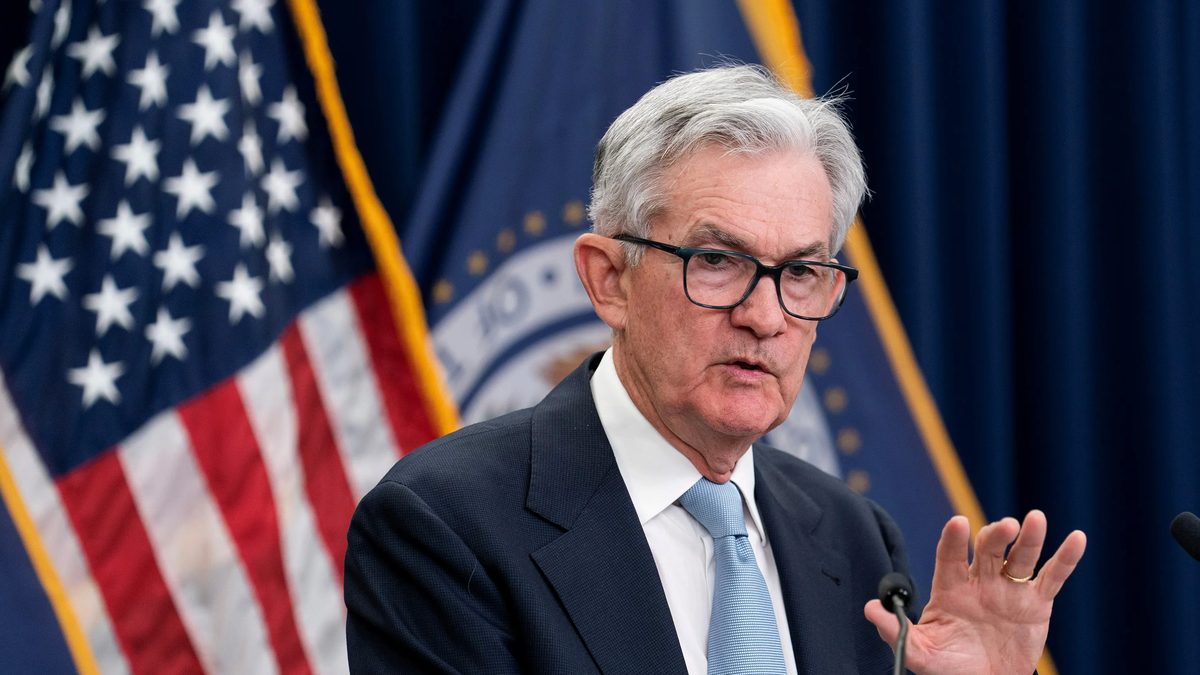Was the central bank wrong with its half-point maneuver with rates? Does the error deepen if you insist with the losses? Should I take the kettle off the heat?
The United States created 254 thousand net jobs in September and broke all forecasts. Although too much emphasis should not be placed on a single measurement as advised by Austan Goolsbee of the Chicago FED. But the economy has been a volcano that has been boiling incessantly since the second quarter. The more data is observed (from various sources), the more it confirms it. After all, In the successful landing piloted by the FED, the only thing that really lands is inflation. Ironically, his prudential rate cut adds fuel to the fire. Since the central bank lowered short rates by half a point on September 18, long rates have risen by more than a quarter – 30 basis points – in clear dissent. It is known that prevention is better than cure. However, if to prevent a phantom recession an overheating of the cycle is encouraged, the remedy may be worse than the disease. You don’t need to show a bad inflation number to understand it.
The content you want to access is exclusive to subscribers.
The economy roars. GDP grew 3% from April to June and everything suggests that it maintained that astonishing cruising speed until today. The growth in services activity in August and September – according to the latest PMI reports – indicates that the fourth quarter begins with unusual vigor. The FED, Jerome Powell said, thought that the more moderate records of expansion of gross domestic income – 1.3% in the second quarter – were the prologue to a downward recalculation of such strength. It would not be the first time that such an important discrepancy has been diluted in this way. Sustaining the increases in private consumption in July and August – against a backdrop of slower income generation – sank the personal savings rate below 3%. A very aggressive threshold to be crossed and persist for a long time.


Powell acknowledged that the FED lowered rates by half a point considering the high probability of this reversal. But the reality is exuberant. The figures were corrected, yes. Just not by default. Domestic income increased 3.4% and not 1.3% as originally estimated. It grew more than the GDP. Consumers spend at their discretion, but were able to save 4.8% of their disposable income in August. It is not a relationship strained to the maximum that, out of caution, predicts a significant retraction. If the FED also reduces interest rates, even less so. Was the central bank wrong with its half-point maneuver? Does the error deepen if you insist with the losses?
The labor market: the Achilles heel
Over rained, wet. The labor market is the Achilles heel of expansion. The sharp jump in the unemployment rate from January to July, and the application of the Sahm rule, issued a recession ruling in August (another on the long list). Although it is known that unemployment does not occur at the cost of job destruction. But the parallel slowdown in job creation turned on a yellow light. And Powell warned that he would not tolerate any further signs of weakening working conditions. The half-point drop, as Governor Lisa Cook pointed out, was a clear way to make it noticeable.
Very big then is the surprise that September brought. Created 254 thousand net new jobs (more than the average of 203 thousand for the last twelve months). The July and August reviews added another 72 thousand. The unemployment rate fell to 4.1% (two tenths less than in July). For the record: labor participation did not change, it remained at 62.7% for the third consecutive month. But there were 281 thousand fewer unemployed. Salaries grew 4% last year (versus 2.2% inflation as of August). It is a postcard of robustness without chiaroscuros that was not expected at all. As Goolsbee says, be careful, it’s a single snapshot. But it does not clash with the feature film of a vibrant expansion.
Expectant market: what will the FED do?
The FED made a mistake with the half-point cut, he says Larry Summers with Monday’s newspaper and the September labor report. The markets were clamoring for another cut of the same nature for next month. Although Powell, before the report, had already downplayed the idea. The great chief endorsed the itinerary planned on the last point map. A reduction of a quarter point in each of the two meetings remaining until the end of the year. And the markets, now, buy that roadmap.
Powell told us at the time that the 19 officials who make the point map agreed to prune half a point before 2025 begins. But that is not the case, according to official documentation. Two of them preferred not to touch anything else. Seven were inclined to cut off just a quarter. And the other nine who were fighting for half a point have just read the news. What will the FED do? He should take the kettle off the heat, and give the rate cut a friendly pause. But it can do what it wants unless a hint of rising inflation (such as those highlighted in the PMI reports) forces it into a grim gesture. He does not run behind events but excessively ahead. The economy doesn’t need your help, and that’s the best. Let the Stock Market say it: it doesn’t care what the central bank decides. The problem of an economy that grows stubbornly and quickly is with the Treasury bonds and not with her. If you endured the abrupt journey from zero rates to 5.50%, it won’t hurt you if they stop at 5%. Ensuring strong corporate profits will do just fine.
Source: Ambito




